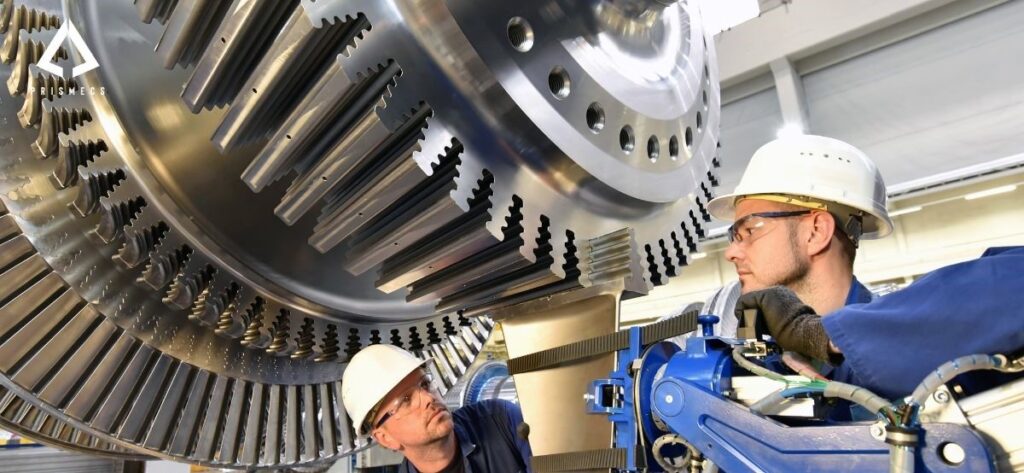DLN tuning services have become essential in turbine operation and maintenance. These services focus on optimizing turbine performance while reducing harmful emissions, particularly nitrogen oxides (NOx), which are significant contributors to air pollution. DLN tuning is an essential practice for modern turbine operators aiming to balance efficiency, compliance with regulations, and environmental impact.
Benefits of DLN Tuning for Turbines
Enhanced Efficiency
DLN tuning allows turbines to run more efficiently by fine-tuning combustion settings to improve performance and fuel utilization. This process leads to energy savings, which can make a substantial difference in large-scale power generation.
Reduced Emissions
One of the primary goals of DLN tuning is to minimize NOx emissions, which contribute to environmental issues like smog and acid rain. Lower emissions mean turbines operate more sustainably and comply with air quality regulations.
Improved Turbine Longevity
Regular DLN tuning optimizes combustion, reducing thermal stress on turbine components. This optimization helps extend the equipment’s lifespan, preventing costly repairs and downtime.
How DLN Tuning Works
DLN tuning involves a careful balance of fuel and air to optimize combustion within the turbine. Engineers use a combination of specialized tools, software, and real-time data analysis to make precise adjustments. The result is a more efficient combustion process, ensuring that the turbine performs at peak efficiency while keeping emissions low.
Tools and Technologies Used in DLN Tuning
DLN tuning requires advanced diagnostic tools to measure combustion dynamics, temperature distributions, and emission levels. Many operators also use predictive analytics to anticipate optimal settings, adjusting based on real-time data to adapt to fluctuating operating conditions.
Step-by-Step Process of DLN Tuning Services
Initial Assessment and Diagnostics
The process begins with an in-depth assessment of the turbine’s current performance. This stage includes diagnostics to identify areas for improvement and any existing issues impacting efficiency or emissions.
Calibration and Optimization of Combustion Parameters
Technicians adjust combustion parameters based on the initial assessment. This phase is crucial for improving efficiency and emissions control, as it aligns the turbine’s settings with its operational demands.
Testing and Validation of Tuned Settings
After calibration, the turbine undergoes testing to validate the adjustments. This step ensures that changes positively impact efficiency and emissions without causing instability in the combustion process.
Final Adjustments and Fine-Tuning for Peak Performance
Once the testing confirms effective tuning, final adjustments are made to refine the settings further. This fine-tuning maximizes performance and ensures long-term stability.
Challenges and Solutions in DLN Tuning
While DLN tuning offers many benefits, challenges such as fluctuating fuel composition and varying load demands can complicate the process. Advanced diagnostic tools and predictive models help to overcome these issues, ensuring a consistent and efficient tuning process.
DLN tuning may vary depending on turbine models and configurations. Tuning services are tailored to fit each turbine’s unique characteristics, ensuring that every unit achieves optimal performance and emissions compliance.
The Impact of DLN Tuning on Environmental Compliance
DLN tuning effectively reduces NOx emissions by optimizing combustion temperatures and air-fuel ratios. These adjustments help turbines meet strict emission limits and contribute to improved air quality.
As regulations around emissions become stricter, DLN tuning services help operators comply with environmental standards. This compliance is essential for maintaining operating licenses and minimizing environmental impact.
By reducing emissions and improving efficiency, DLN tuning supports the broader goals of sustainable energy production. Cleaner turbines contribute to lower carbon footprints and help the industry align with environmental goals.
Emerging technologies such as AI-driven analytics, advanced sensors, and automation are revolutionizing DLN tuning. These innovations promise even greater efficiency, precision, and sustainability for turbine operators.
As renewable energy becomes more prominent, DLN tuning will play a critical role in integrating and managing diverse energy sources. Future DLN tuning advancements will likely enable smoother transitions between different power sources and greater compatibility with renewable energy systems.
Role of Gas Turbine Control Systems in DLN Tuning
Gas turbine control systems are integral to successful DLN tuning as they manage and automate critical turbine functions. Key ways these systems contribute to DLN tuning include:
- Real-Time Monitoring and Control: Gas turbine control systems continuously monitor critical parameters, such as temperature, pressure, and emission levels. Advanced sensors provide data that allows for rapid adjustments, enhancing DLN tuning accuracy.
- Automated Fuel Control: Control systems regulate fuel flow to each burner, adjusting for load variations and fuel types. This level of control is essential for maintaining an optimal air-fuel ratio, which is at the heart of DLN tuning.
- Load Shedding and Power Management: The control system manages power output based on demand, reducing stress on turbine components and extending equipment life. This function also stabilizes combustion, especially during fluctuations in power requirements.
- Diagnostic and Predictive Maintenance: Built-in diagnostics within the control system detect irregularities early, allowing for proactive maintenance. Predictive analytics also suggest when DLN tuning may be required, based on performance trends and environmental factors.
In the oil and gas industry, efficiency and safety are paramount, and General Electric (GE) has been at the forefront of technological innovations with its advanced turbine control systems. These systems integrate cutting-edge automation and data analytics to enhance operational performance, reduce downtime, and improve safety standards. IS200TSVCH1AJE, IS200EGPAG1B are examples of GE gas turbine control system parts.
Conclusion
DLN tuning services are invaluable for turbine operators looking to enhance performance, reduce emissions, and extend the life of their equipment. By understanding how these services work, operators can make informed decisions about their turbine maintenance strategies and stay ahead in a changing regulatory landscape.
Read More:



